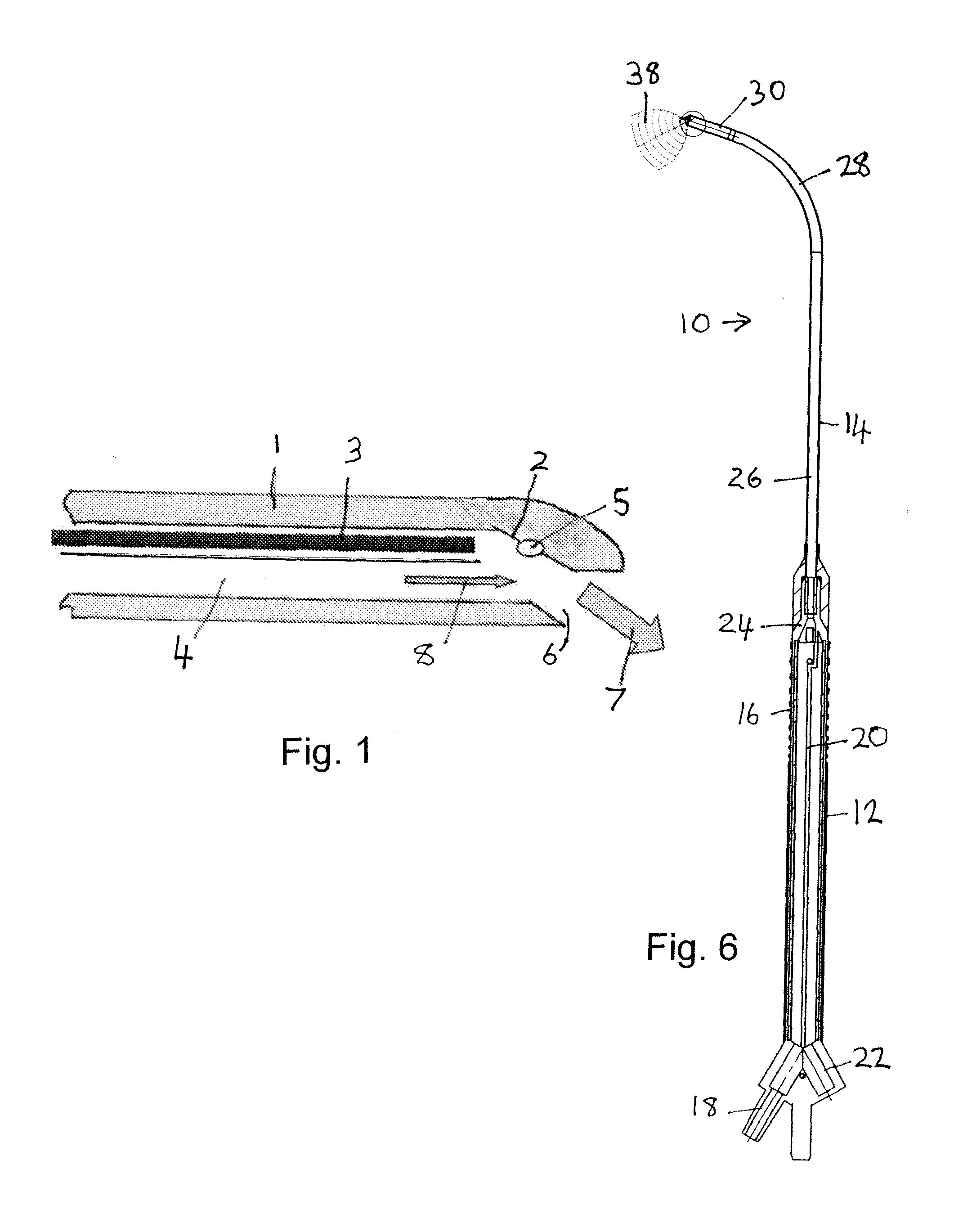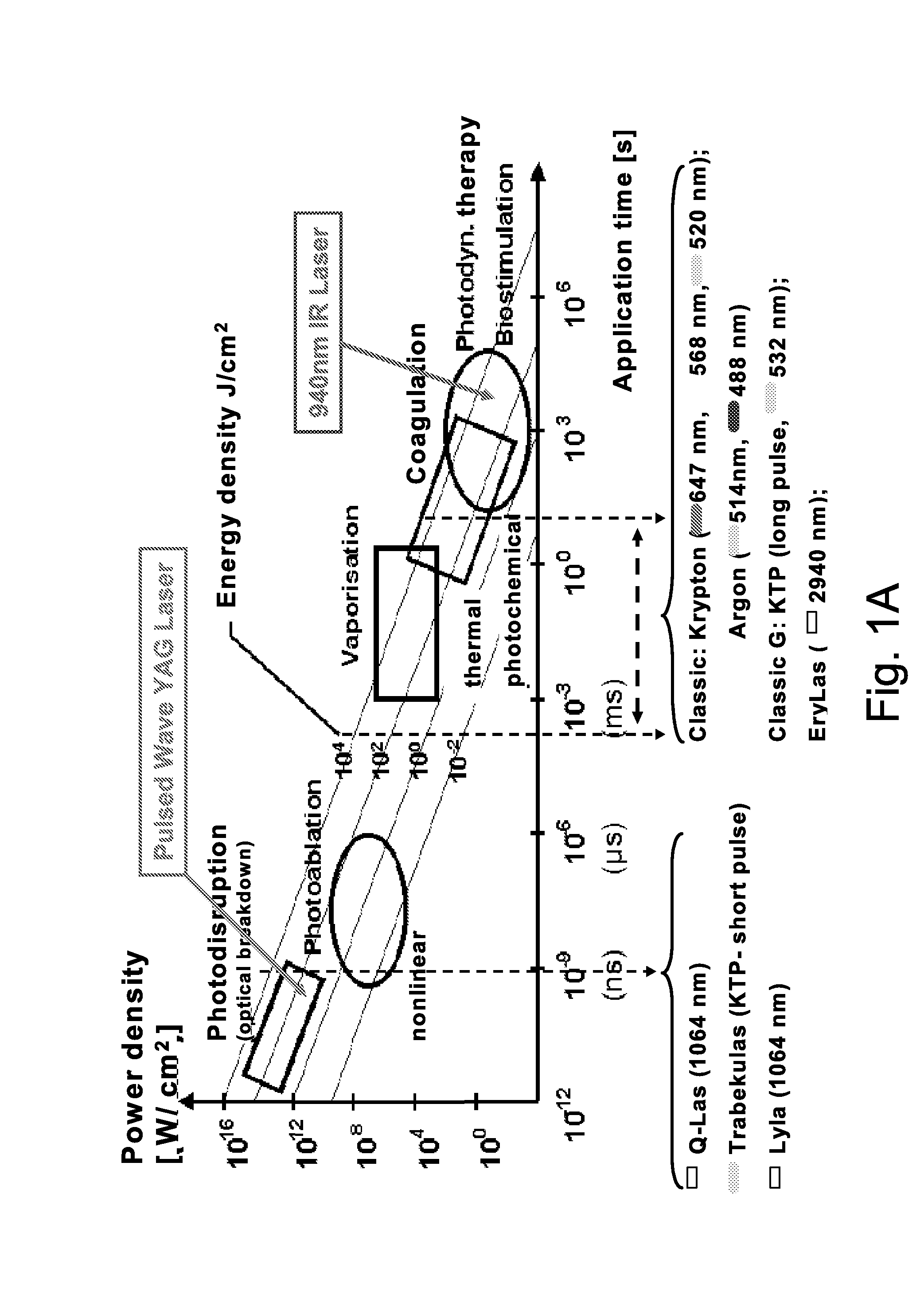Two step mammalian biofilm treatment processes and systems
a biofilm and mammalian technology, applied in the field of two-step mammalian biofilm treatment processes and systems, can solve the problems of reducing affecting the treatment effect, so as to reduce the probability of regrowth or regrowth of biofilm
- Summary
- Abstract
- Description
- Claims
- Application Information
AI Technical Summary
Benefits of technology
Problems solved by technology
Method used
Image
Examples
example 1
Destruction of a Biofilm
[0212]A sample biofilm is treated with laser-generated shockwaves employing a pulsed Nd:YAG laser at a wavelength of 1064 nm. The laser output energy is between about 8 mJ and about 12 mJ. The laser is pulsed using passive Q-switch pulsing with a pulse length between about 4 ns and about 8 ns. The laser energy is delivered to the biofilms using a shockwave applicator intended for cataract surgery such as is described in Dodick U.S. Pat. No. 5,906,611. As described in the Dodick patent, in the shockwave applicator, an optical fiber tip outputting laser pulses is aimed at a titanium target producing plasma and generating a shockwave.
[0213]Distally, the shockwave applicator employed comprises a disposable needle or probe instrument in the form of a hollow metal 1.2 mm diameter tube coupled with an optical fiber of diameter about 300 μm at one end and with a 0.7 mm opening at the other end. The laser beam propagates axially inside the tube and hits a titanium tar...
example 2
[0218]A number of biofilms of S. aureus Xen 31, a stable bioluminescent clinical methicillin-resistant Staphylococcus aureus, construct, are grown in a 96 well microtiter plate for 48 hours. The study includes the following seven trials:[0219]a) control;[0220]b) ciprofloxacin alone (at 3 mg / L, an established minimum inhibitory concentration);[0221]c) shockwave treatment alone;[0222]d) near infrared laser alone[0223]e) shockwave treatment and ciprofloxacin;[0224]f) shockwave treatment plus near infrared laser treatment; and[0225]g) shockwave treatment, near infrared laser and ciprofloxacin.
[0226]The shockwave treatment is carried out with a Q-switched Nd-YAG laser set with a frequency of 1 pulse per second at a wavelength of 1,064 nm and output energy for the laser system of from about 8 to about 12 mJ. Each biofilm treated is exposed to 10-20 pulses of shockwave placed in each of the tested wells. The near infrared treatment is carried out with a 940 nm ...
PUM
 Login to View More
Login to View More Abstract
Description
Claims
Application Information
 Login to View More
Login to View More - R&D
- Intellectual Property
- Life Sciences
- Materials
- Tech Scout
- Unparalleled Data Quality
- Higher Quality Content
- 60% Fewer Hallucinations
Browse by: Latest US Patents, China's latest patents, Technical Efficacy Thesaurus, Application Domain, Technology Topic, Popular Technical Reports.
© 2025 PatSnap. All rights reserved.Legal|Privacy policy|Modern Slavery Act Transparency Statement|Sitemap|About US| Contact US: help@patsnap.com



